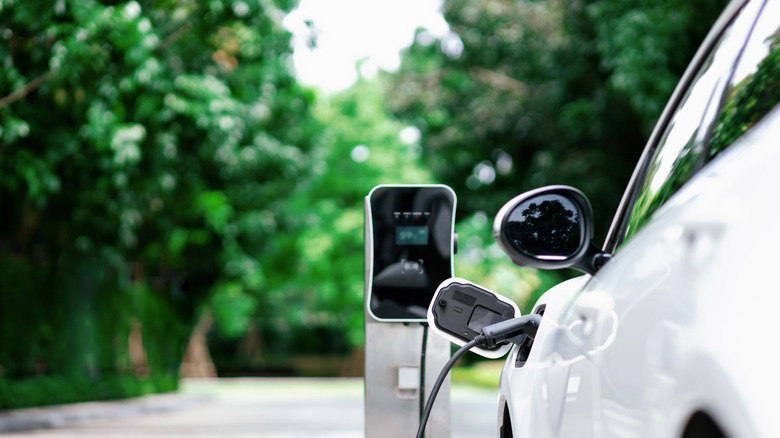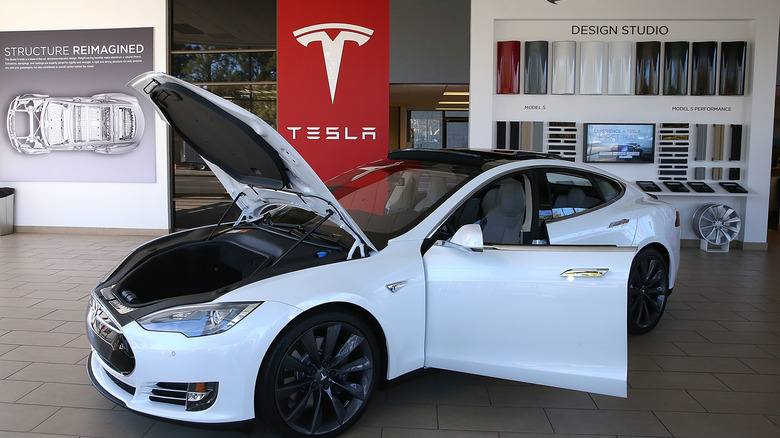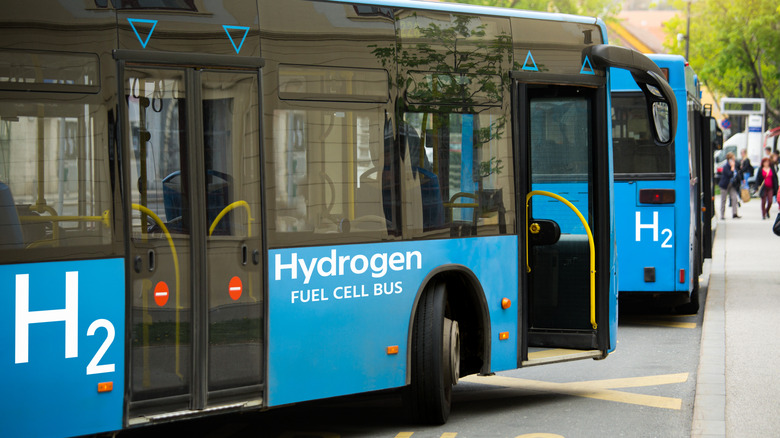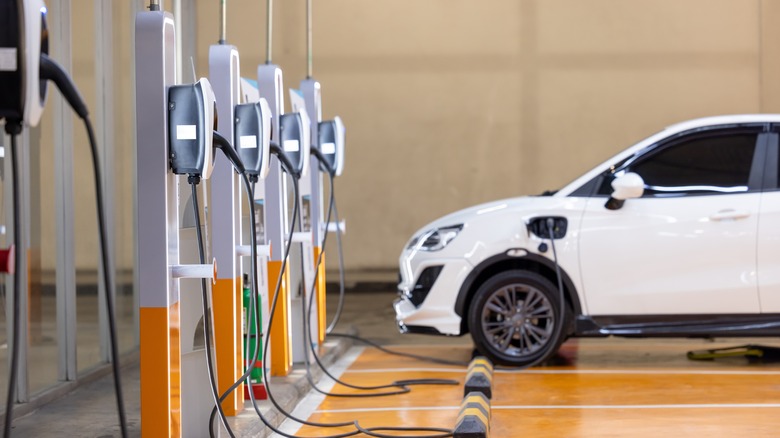Eco-Friendly Engines: How Car Manufacturers Are Going Green
These days, consumers are a lot more picky about how their purchases reflect their values. In 2023, McKinsey and Company shared how consumers cared about sustainability and how they've proven it with their wallets. A joint study with Nielsen studied five years of U.S. sales data from 2017 to June 2022, revealing a clear and material link between environmentally friendly claims and consumer spending through disproportionate growth.
For many people, cars are some of the most expensive and longest commitments an ordinary person will make. For this reason, it's no wonder that prospective car owners are asking themselves important questions about their car's reflection on their lifestyle, such as their commitment to a lower carbon footprint.
Thankfully, when it comes to solving the problem of creating green car engines, manufacturers have opted for various routes to get there. In fact, the sales of green vehicles that operate on alternative fuels, electric vehicles (EV), and plug-in electric vehicles are growing each year, according to the U.S. Environmental Protection Agency (EPA).
In 2022, the International Energy Agency (IEA) confirmed that the demand for electric cars, one type of eco-friendly engine, surged by 35%. Aside from private-sector investment, the IEA credits ambitious policy programs across major economies that foster domestic EV industries to this growth.
In many ways, many manufacturers are continually incentivized to develop new ways to create greener engines. Here are some of the types of eco-friendly engines that already exist today.
Electric Vehicles (EV)
For most people, EVs are the first thing that comes to mind when you hear "eco-friendly car." Defined by the U.S. Department of Energy, all-electric vehicles are powered by an electric motor and draw power from a battery.
Compared to cars with internal combustion engines (ICE), EVs are known to produce no greenhouse gas (GHG) emissions, which leads to less air pollution overall. Because they have fewer components, EVs are also known to be relatively quieter than their ICE counterparts.
However, it's important to understand that EVs still have a hidden carbon footprint, particularly during manufacturing and end-of-life processes. Additionally, how eco-friendly an EV can be depends on how much of its power is generated from fossil fuels.
Coming at the heels of Tesla slashing prices for its EVs, Cox Automotive confirmed that electric vehicle sales accounted for 7.9% of total industry sales, citing higher inventory, product availability, and downward pricing pressure. In 2023, it also mentioned Volvo, Nissan, Mercedes, and Hyundai delivered increases above 200% due to new products entering the market.
Unfortunately, there are still a lot of problems with electric cars that prevent people from making the transition, such as charging, range anxiety, and battery degradation. In addition, while there are increasingly affordable electric cars in the market, Bloomberg claims that higher sticker prices are still driving people towards hybrid vehicles instead.
Hybrid Vehicles (HV)
According to Car and Driver, hybrids and plug-in-hybrid-electric vehicles (PHEVs) are in the "middle ground" of new-age electrified vehicles. So, if you're on the fence about going fully electric, trying these halfway alternatives might be the right choice.
Hybrids are vehicles powered by an electric motor that draws electricity from a battery and an internal combustion engine. Unlike EVs, hybrids don't need to be plugged into a charging station to charge their battery. Instead, hybrid batteries are charged through the car's regenerative braking system and internal combustion engine.
Because of its dependence on fuel, hybrids still have relatively higher emissions than pure electric vehicles. In addition, its repair cost may be higher than a traditional vehicle since its relatively more complex system requires specialized knowledge and equipment.
Not to mention, hybrids have similar issues with EVs in terms of their battery life and replacement. However, they have overall better fuel economy, no real learning curve, and remove a critical issue that many drivers have with EVs: range anxiety.
Some of the most reliable hybrid cars include the Corolla Cross Hybrid, Hyundai Sonata Hybrid, Kia Sportage Hybrid, Toyota Prius, and the Lexus CT 20h. For SUV owners, hybrids offer more flexibility by having high fuel efficiency and plenty of capacity for off-roading. It's no wonder that S&P Global Mobility claims that hybrid sales in the U.S. are expected to triple in five years (via Reuters).
Plug-in hybrid (PHEV) vehicles
While hybrids and PHEVs use similar technology, one of the main differences is that PHEVs have higher-capacity battery packs, which can be charged using a wall outlet or charging equipment. Because PHEV vehicles can switch between power sources, they have a longer range than all-electric vehicles and offer a range of other benefits.
On the other hand, PHEVs do have some drawbacks. Because of the extra weight from its two drive systems and relatively larger battery pack, the Australian Electric Vehicle Association claims that PHEVs are typically heavier than an equivalent ICE car. For this reason, it will likely consume more fuel than its ICE counterpart.
In addition, the Australian EVA also shares that charging the PHEV battery using its engine is three times less efficient (on average) than charging from a 240V electric supply. Because of this, it's almost always better to charge the battery through charging stations instead.
However, for some drivers, PHEVs offer just enough benefits to justify their purchase. For example, the 2024 Jeep Wrangler's plug-in configuration can go for about 20 miles using its battery, which is more than it can run on a gallon of gas on some days. Because many people can't afford to shift to EVs yet for one reason or another, PHEVs offer reduced emissions for short drives.
In 2023, Statista shared that PHEV market unit sales are expected to reach 3.6 million vehicles with a projected market volume of $225.5 billion in five years.
Hydrogen Fuel Cell Electric Vehicles (FCEV)
With charging still being a pain point for EV owners, it's no wonder why many car manufacturers are considering Hydrogen Fuel Cell Electric Vehicles (FCEV). Because a single hydrogen station can support 1,000 vehicles, they don't require land-intensive charging lots. Not to mention, Toyota claims that refueling hydrogen-powered tanks takes only 3-5 minutes.
However, FCEVs aren't without their share of issues, especially when it comes to energy efficiency. In addition, while FCEVs only emit water vapor from their tailpipes, the Union of Concerned Scientists notes that most hydrogen sourced for fuel comes from traditional natural gas extraction. However, because hydrogen can be derived from domestic sources, The U.S. Department of Energy says that FCEVs could help reduce the country's dependence on foreign oil.
Hydrogen cars also tend to be more expensive than EVs and PHEVs. Since they're manufactured with a low production volume, the National Renewable Energy Laboratory says that FCEVs are available for sale or lease in the U.S. for approximately $58,300 annually. On the other hand, Bankrate claims that the average cost of leasing a new EV is $50,683 (as of September 2023).
According to CNBC, over 6,000 fuel cell vehicles have been leased and sold in the United States alone (as of February 2019). Among the leaders in the FCEV field, Toyota is the largest player in the U.S. consumer market for hydrogen fuel cell cars and has sold to 5,000 buyers from 2015 to 2019.
The Future of Eco-Friendly Engines
A Georgia Southern University study cites how eco-friendliness, fuel mileage production, car design, and high technology are the most important features of a car for people who have a positive attitude toward eco-friendly cars.
No matter how eco-friendly an engine is, it will always be limited by how it has been fueled. For this reason, some manufacturers have decided that the best course of action to become increasingly eco-friendly is reducing fossil fuel use in their cars. According to the U.S. Department of Energy, more than a dozen alternative fuels are in production or under development for use in alternative fuel vehicles and alternative technology vehicles. In a 2022 article, McKinsey & Company shares that the demand for sustainable fuels is expected to triple over the next 20 years.
However, at the core of it, no matter how much effort manufacturers spend on developing eco-friendly engines, consumer adoption is the last piece of the puzzle. Aside from taking the time to bring awareness and education around eco-friendly alternatives, manufacturers should also address the barriers that keep people from making the transition instead of just designing cars that can hit their reduced emissions goals. Governments should continue to roll out incentives for manufacturers and consumers to push forward more eco-friendly alternatives.





